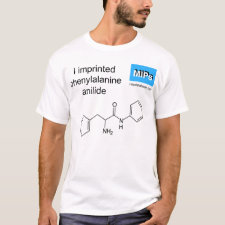
Authors: Halhalli MR, Aureliano CSA, Schillinger E, Sulitzky C, Titirici MM, Sellergren B
Article Title: An improved grafting technique for producing imprinted thin film composite beads.
Publication date: 2012
Journal: Polymer Chemistry
Volume: 3
Issue: (4)
Page numbers: 1033-1042.
DOI: 10.1039/C2PY00544A
Alternative URL: https://www.researchgate.net/publication/220007118_An_improved_grafting_technique_for_producing_imprinted_thin_film_composite_beads
Abstract: Thin molecularly imprinted polymer (MIP) films were grafted from porous silica using immobilized azoinitiators in the absence or presence of RAFT mediated control or by controlled radical polymerization using immobilized iniferters. The resulting composites were compared in terms of film thickness, the grafted layer homogeneity, effect of different support morphologies and their chromatographic performance regarding enantioselectivity, and efficiency. Film thickness was controlled either kinetically by interrupted polymerization or stoichiometrically based on complete monomer conversion. Thus, l-phenylalanine anilide (l-PA) imprinted poly(MAA-co-EDMA) silica composites prepared by the former technique using the iniferter modified supports exhibited heterogeneous distribution of grafted polymer as shown by the absence of correlations between the pore system parameters and the graft density. This contrasted with the linear correlations observed by both the kinetic and stoichiometric grafting techniques based on azoinitiator or RAFT modified supports indicating that these exhibit homogeneous grafted films. These results were corroborated by chromatographic tests. Whereas the iniferter composites produced by interrupted polymerization were not capable of racemic resolution and generally showed very low or non-existent enantioselectivity, the azo-composites showed a pronounced enantioselectivity which was strongly dependent on the film thickness, monomer dilution, the RAFT/initiator ratio and the method of grafting. Hence, composites prepared by exhaustive polymerization under dilute conditions using high RAFT/initiator ratios displayed strongly enhanced chromatographic performance in terms of retentivity and enantioselectivity
Template and target information: L-phenylalanine anilide, L-PA



Join the Society for Molecular Imprinting

New items RSS feed
Sign-up for e-mail updates:
Choose between receiving an occasional newsletter or more frequent e-mail alerts.
Click here to go to the sign-up page.
Is your name elemental or peptidic? Enter your name and find out by clicking either of the buttons below!
Other products you may like:
 MIPdatabase
MIPdatabase









